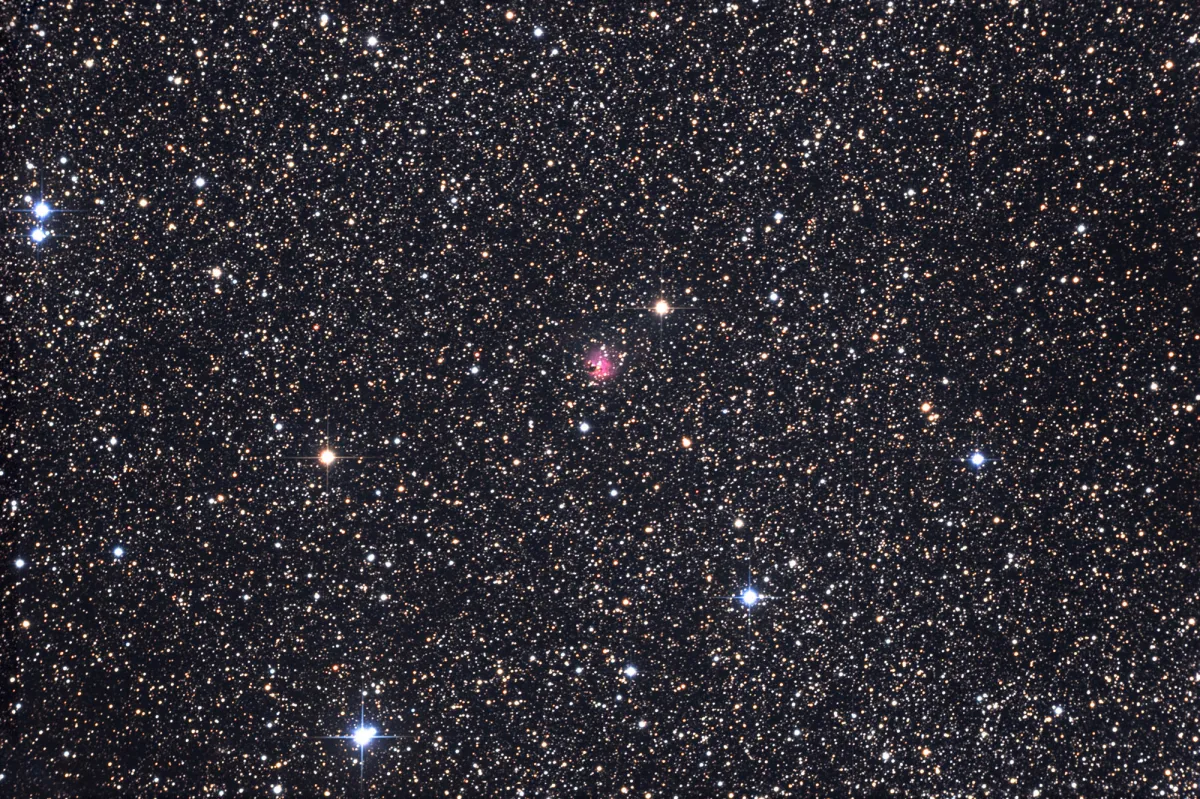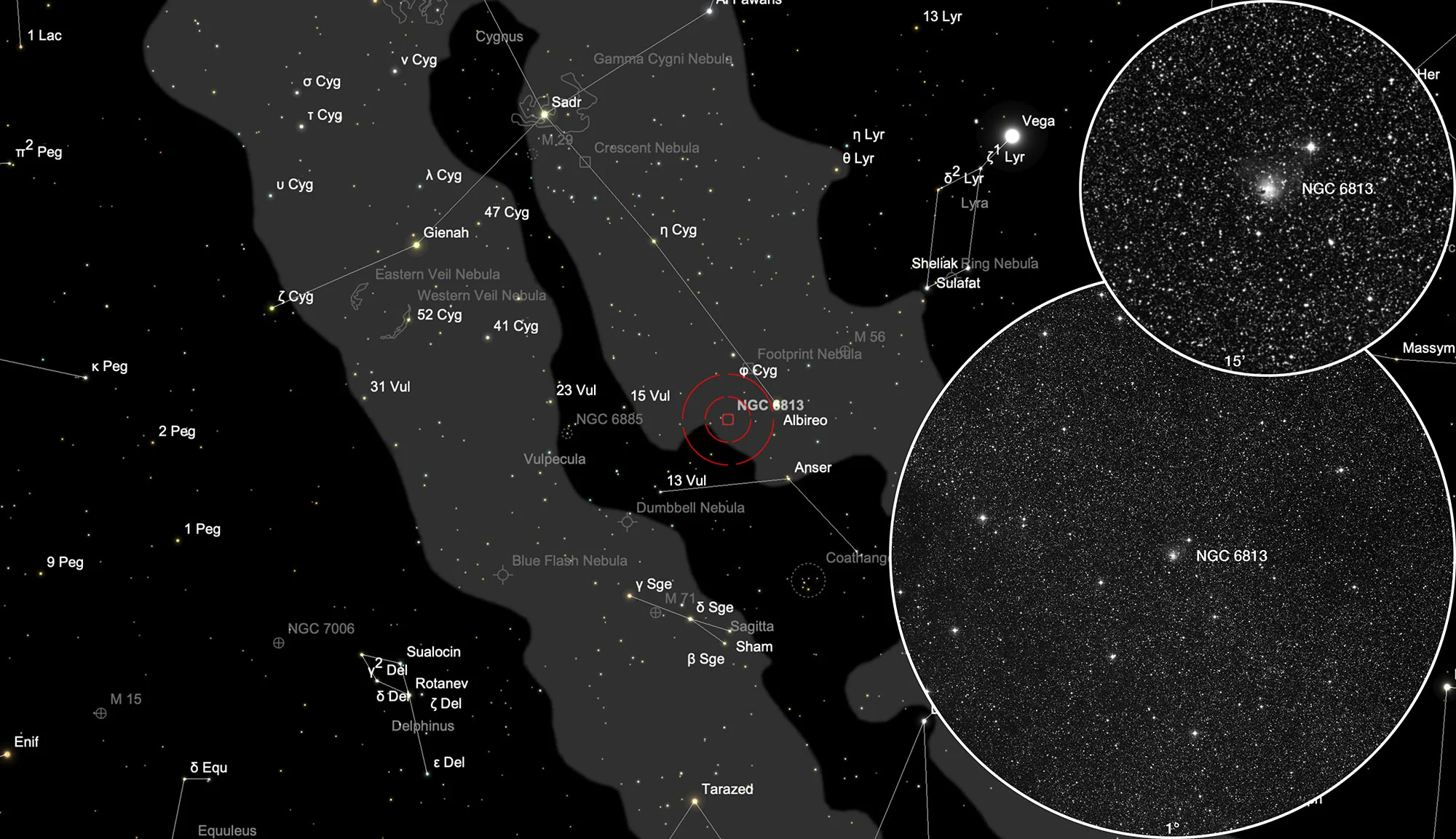Galactic Nebula NGC 6813

History
The emission nebula NGC 6813 was discovered on 7 August 1864 by the German astronomer Albert Marth using William Lassell's 48 inch f/9.4 Newtonian telescope in Malta. [277, 396] He described the object as «two stars in very faint, small nebula». [313]
In 1946 the German astronomer Rudolph Minkowski published a list of emission nebulae which he discovered on photographic plates exposed by William C. Miller with the 10 inch telescope at Mount Wilson Observatory. There he classified NGC 6813 (also Min 1-93) as a diffuse one or strange nebula, noting that Heber D. Curtis observed a visually continuous spectrum in 1918, but the nebula showed fairly strong Hα emission. [397]
Physical Properties
On Simbad, NGC 6813 is classified as interstellar matter. No distance information can be found. [145] The designation IRAS 19383+2711 indicates an infrared source, which is due to a star cluster embedded in dense gas and dust from which only the far-infrared emission can be seen. [398] A strong source of microwave radiation in the 6.7 GHz line, a so-called methanol maser, was also found, indicating the formation of massive stars. [399] NGC 6813 is an ultra-compact H-II region in which stars are formed.
Finder Chart
The galactic nebula NGC 6813 is located in the constellation Vulpecula. The best observation time is May to October.
